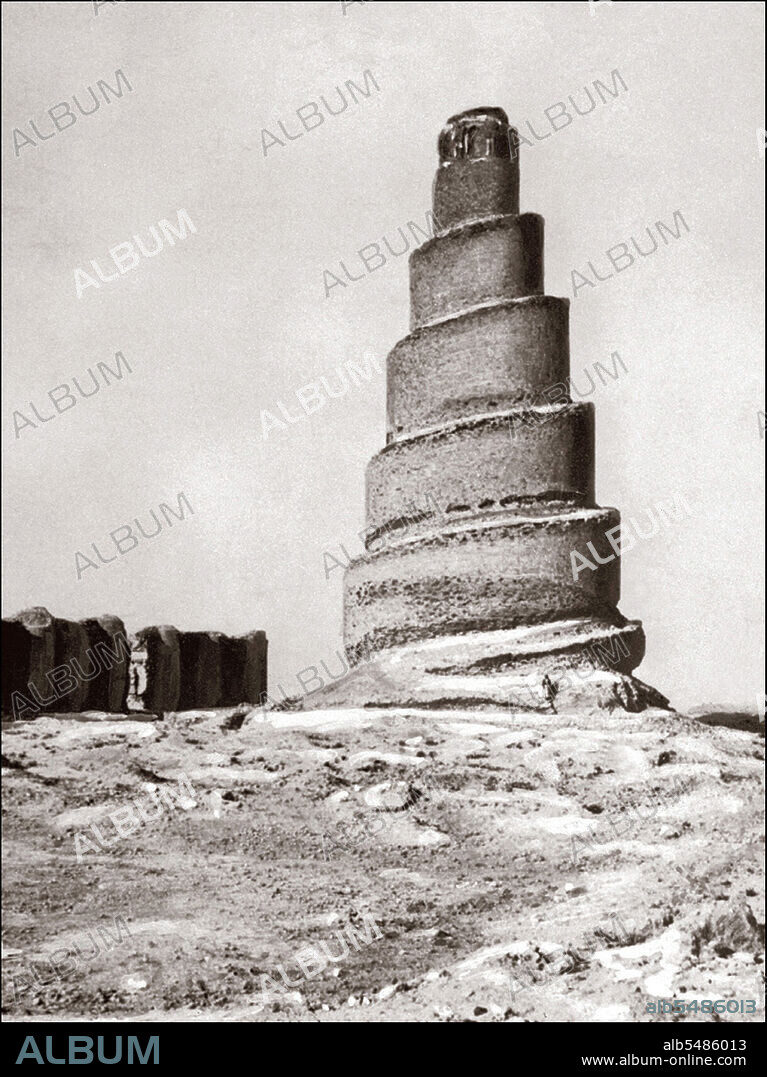alb5486013
Iraq: The Malwiya, minaret of the Great Mosque at Samarra (completed 852 CE), in the late 19th century.

|
Add to another lightbox |
|
Add to another lightbox |



Title:
Iraq: The Malwiya, minaret of the Great Mosque at Samarra (completed 852 CE), in the late 19th century.
Caption:
The Minaret of Samarra, also known as the Malwiya Minaret or Malwiya Tower is part of the Great Mosque of Samarra in Samarra, Iraq. The mosque is one of the largest in the world, and was built by the Abbasid caliph Al-Mutawakkil. The minaret was originally connected to the mosque by a bridge. The minaret or tower was constructed in 848 – 852 out of sandstone, and is unique among other minarets because of its ascending spiral conical design. 52 meters high and 33 meters wide at the base, the spiral contains stairs reaching to the top. The word ‘malwiya’ translates as ‘snail shell’. Unlike most minarets, the Malwiya was not used for the call to prayer, as its height made it impractical for such use. However, it is visible from a considerable distance in the area around Samarra and therefore may have been designed as a strong visual statement of the presence of Islam in the Tigris Valley.
Credit:
Album / Pictures From History/Universal Images Group
Releases:
Model: No - Property: No
Rights questions?
Rights questions?
Image size:
3583 x 4782 px | 49.0 MB
Print size:
30.3 x 40.5 cm | 11.9 x 15.9 in (300 dpi)
Keywords:
ABASSID • ANT. OR.: MESOPOTAMIA • ANTIQUITIES ORIENTAL: MESOPOTAMIA • ARCHITECTURE • ASIA PICTURES • ASIA • ASIAN IMAGE • ASIAN IMAGES • ASIAN PICTURES • ASIAN • HISTORIA UNIVERSAL • HISTORICAL IMAGES • HISTORICAL PICTURES • HISTORICAL • HISTORY IMAGES • HISTORY PICTURES • HISTORY • IRAK • IRAQ • ISLAM • ISLAMIC ARCHITECTURE • ISLAMIC • ISLAMISM • MALWIYA • MALWIYE • MASJID • MESOPOTAMIA • MESOPOTAMIAN • MINARET • MOSQUE • MUSLIM • SAMARRA
 Pinterest
Pinterest Twitter
Twitter Facebook
Facebook Copy link
Copy link Email
Email

